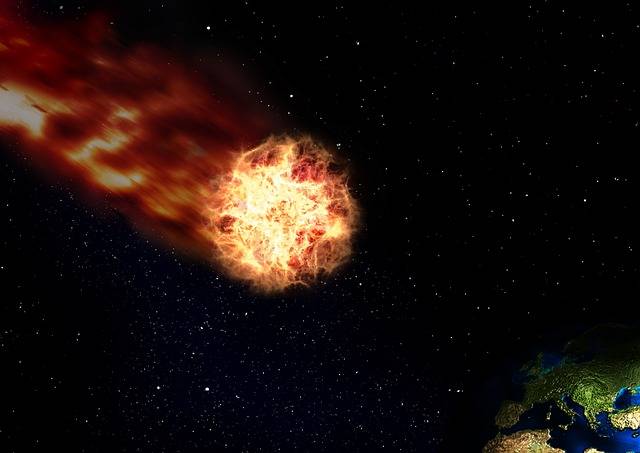.
- Uncovering the Geologic Reasons Behind Haiti’s Earthquake Vulnerability
- Examining the Role of Plate Tectonics in Haitian Earthquakes
- Exploring How Seismic Activity Impacts Haiti’s Infrastructure
- Investigating What Makes Haiti Prone to Devastating Earthquakes
- Understanding Why Haitian Earthquakes are so Destructive
Haiti is a Caribbean country that has been plagued by devastating earthquakes for centuries. The island nation sits on the edge of two tectonic plates, making it particularly vulnerable to seismic activity. In 2010, an earthquake measuring 7.0 on the Richter scale struck Haiti, killing over 200,000 people and leaving millions homeless.
The reason why Haiti is so prone to earthquakes can be traced back to its geology and geography. The island lies between two major tectonic plates – the North American Plate and the Caribbean Plate – which are constantly shifting against each other due to plate movement caused by convection currents in Earth’s mantle layer beneath them. This creates tension along fault lines in this region of Earth’s crust known as “the Enriquillo-Plantain Garden Fault Zone”. When these tensions build up enough energy they are released in sudden bursts causing powerful tremors or quakes that can cause significant damage if they occur near populated areas like those found in Haiti today such as Port-au-Prince or Jacmel City .
In addition to being located at a seismically active area of Earth’s surface, there are several other factors that make Haiti more susceptible than other countries when it comes to experiencing devastating earthquakes:
1) Poor building construction standards: Many buildings constructed before 2010 were not built with proper earthquake safety measures taken into account – meaning they could easily collapse during an earthquake; 2) Lack of emergency preparedness plans: There was no effective plan for responding quickly after an earthquake hit; 3) High population density: With many people living close together within cities like Port au Prince , there is greater potential for loss of life should a quake strike; 4) Deforestation : Trees provide stability during ground shaking events but deforestation has left much land exposed without protection from landslides ; 5) Poverty : Without access to resources needed for disaster preparation and response , poorer communities may suffer disproportionately from natural disasters such as earthquakes .
All these factors combined mean that when large tremors do occur near populated areas , Haitians often face catastrophic consequences . While we cannot prevent future quakes from occurring , we can work towards mitigating their effects through better building codes and improved emergency response plans .
Uncovering the Geologic Reasons Behind Haiti’s Earthquake Vulnerability

Haiti is no stranger to devastating earthquakes, with the most recent one occurring in 2010. But why does this small Caribbean nation seem so vulnerable to these natural disasters? The answer lies in its geology.
The island of Hispaniola, which Haiti shares with the Dominican Republic, is located on a tectonic plate boundary where two plates are moving away from each other at a rate of approximately 2 cm per year. This process has created several faults and fractures throughout the region that can cause powerful earthquakes when they move suddenly during an earthquake event.
In addition to this active fault system, Haiti also sits atop an ancient oceanic crust known as “the Enriquillo-Plantain Garden Fault Zone” (EPGFZ). This zone runs along much of the western side of Hispaniola and is believed to be responsible for some of Haiti’s strongest quakes over time due to its shallow depth below ground level and close proximity to populated areas like Port-au-Prince.
Finally, there are numerous sedimentary basins located beneath parts of Haiti that act as amplifiers for seismic waves generated by distant earthquakes or those originating within the country itself. These basins can increase both their intensity and duration leading them directly into populated areas such as Port-au-Prince causing greater destruction than would otherwise occur if they had been blocked by solid rock formations instead .
Overall it’s clear that geologic factors play a major role in making Haitian citizens more vulnerable than others around them when it comes time for Mother Nature’s fury!
Examining the Role of Plate Tectonics in Haitian Earthquakes
Haiti is no stranger to devastating earthquakes, with the most recent one in 2010 causing widespread destruction and loss of life. But why is Haiti so prone to such catastrophic events? The answer lies in plate tectonics.
Plate tectonics describes how large sections of Earth’s crust move over time, resulting in seismic activity like earthquakes and volcanoes. In Haiti’s case, the Caribbean Plate is slowly moving eastward while the North American Plate moves westward, creating a convergent boundary between them known as a subduction zone. This means that when two plates collide they create immense pressure which can cause an earthquake if released suddenly enough.
The 2010 Haitian earthquake was caused by this exact process; it occurred along a fault line where these two plates meet and resulted from their collision releasing stored energy all at once – an event known as thrust faulting or megathrusting. It was estimated that this quake had a magnitude of 7 on the Richter scale and killed more than 200 000 people making it one of the deadliest natural disasters ever recorded in history!
It’s clear then that examining plate tectonics plays an important role when trying to understand why Haiti experiences such destructive earthquakes – understanding what causes them can help us better prepare for future ones too!
Exploring How Seismic Activity Impacts Haiti’s Infrastructure

Haiti is a Caribbean nation that has been subject to seismic activity for centuries. Earthquakes have caused significant damage to the country’s infrastructure, resulting in loss of life and property. Haiti’s vulnerability to earthquakes can be attributed to its location on the Caribbean Plate boundary, which is an area of high seismic activity. The magnitude 7 earthquake that struck Haiti in 2010 was one of the most devastating natural disasters ever recorded in the region and highlighted how vulnerable this small island nation is when it comes to seismic events.
The impact of such powerful earthquakes on Haiti’s infrastructure has been immense. Buildings constructed before 2010 were not built with modern building codes or materials designed for earthquake resistance, so they were particularly vulnerable during this event and many collapsed completely or sustained severe structural damage as a result. In addition, roads and bridges throughout the country suffered extensive damage due to ground shaking from strong aftershocks following the main shockwave from the quake itself; these have yet to be fully repaired since then despite international aid efforts over recent years attempting reconstruction work across affected areas within Haiti’s borders
As well as causing physical destruction through buildings collapsing or becoming structurally unsound due landslides triggered by tremors, there are also other indirect impacts on infrastructure related specifically with water supply systems being disrupted by broken pipes underground leading up into homes/buildings etc., leaving people without access clean drinking water until repairs can take place – something which takes time even if resources are available immediately post-quake (which isn’t always guaranteed). This highlights just how important it is for any developing countries located near active fault lines like those found around much of South America & Central America – including parts of Mexico – need robust disaster preparedness plans & initiatives implemented ahead-of-time so they’re better equipped should another major event occur again soon!
Investigating What Makes Haiti Prone to Devastating Earthquakes

Haiti is a Caribbean nation that has been plagued by devastating earthquakes throughout its history. The country’s location, geology, and infrastructure all contribute to the frequent seismic activity in the region.
The island of Hispaniola lies on an active fault line between two tectonic plates – the North American Plate and the Caribbean Plate – which makes it prone to earthquakes. Haiti is located near a subduction zone where one plate slides beneath another, creating pressure that can cause powerful tremors when released suddenly. This type of geological activity has caused numerous destructive quakes over time, including some of the most severe in recent memory such as 2010’s magnitude 7 earthquake that killed more than 200 000 people and left millions homeless or displaced from their homes.
In addition to its geologic vulnerability, Haiti also suffers from inadequate building standards which make it difficult for structures to withstand even moderate shaking during an earthquake event. Many buildings are constructed with poor materials or without proper engineering oversight resulting in collapse during seismic events like those experienced recently in Port-au-Prince and other cities across Haiti’s landscape.
Finally, poverty plays a role as well since many Haitians cannot afford modern construction techniques or materials needed for strong foundations capable of withstanding large quakes; this means they often live in poorly built structures unable to protect them from harm should an earthquake strike again soon after one already occurred recently enough for rebuilding efforts not yet completed .
All these factors combine together making Haiti particularly vulnerable to catastrophic earthquakes; however there are steps being taken both domestically within Haitian government agencies as well as through international aid programs aimed at helping mitigate future damage due these natural disasters by improving building codes enforcement among other initiatives designed specifically towards strengthening local infrastructure against potential seismic events going forward into future years..
Understanding Why Haitian Earthquakes are so Destructive
The devastating 2010 earthquake in Haiti is a stark reminder of the country’s vulnerability to seismic activity. With its location on the Caribbean Plate, Haiti is situated in an area that has seen numerous earthquakes over the centuries. But why are Haitian earthquakes so destructive?
One reason for this is due to Haiti’s geography and geology. The island sits atop two tectonic plates – North American and Caribbean – which are moving against each other at a rate of approximately 1-2 cm per year. This movement causes tension between these plates, resulting in frequent seismic activity throughout the region. Additionally, much of Haiti lies on sedimentary rock layers which amplify seismic waves from distant quakes; thus making them more powerful when they reach land surfaces like those found in Port-au-Prince or Jacmel Bay where most Haitians live and work.
Another factor contributing to Haitian earthquakes’ destructiveness is poverty levels within the country itself; many buildings have been constructed with little regard for safety regulations or quake resistance standards leading to widespread destruction during even minor tremors as was seen during last year’s magnitude 7 quake near Petit Goave (west coast). This lack of regulation has also led to overcrowding within cities such as Port au Prince where thousands live without access to basic services like running water or electricity – further exacerbating damage caused by any potential earthquake events
Haiti’s history with natural disasters doesn’t end there either: tropical storms often cause flooding along coastal areas while landslides can occur after heavy rains due to deforestation practices around mountainous regions such as Léogâne (southwest coast). All these factors combined make it clear why Haitian Earthquakes can be so destructive – but with proper planning and investment into infrastructure projects we may yet see less severe impacts from future events!